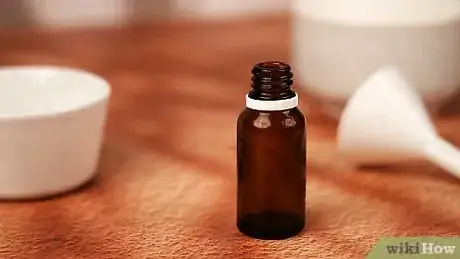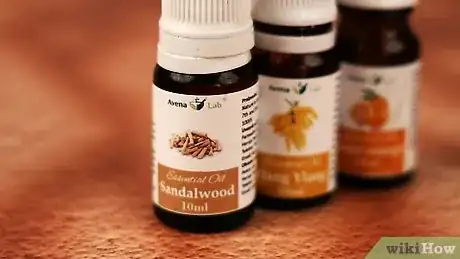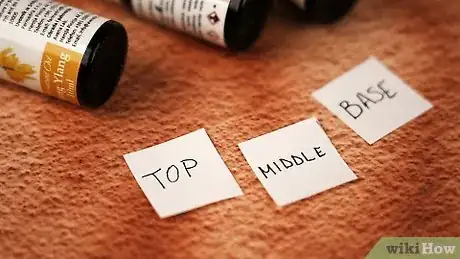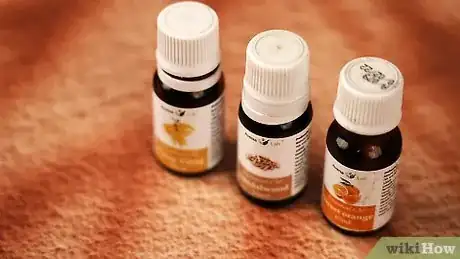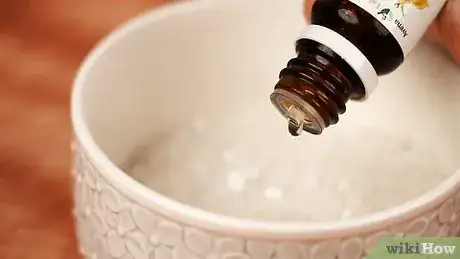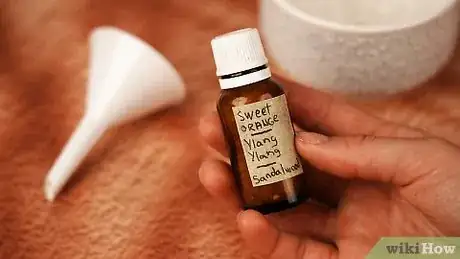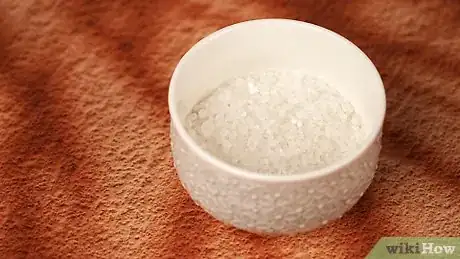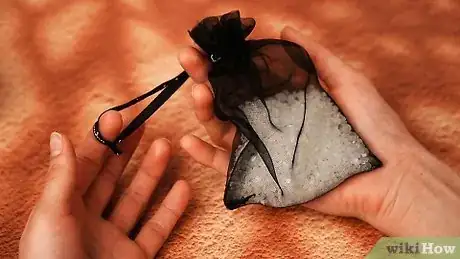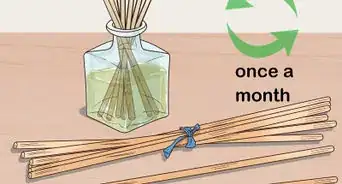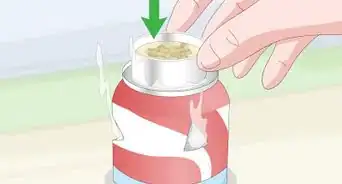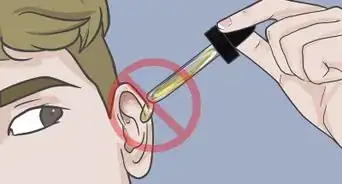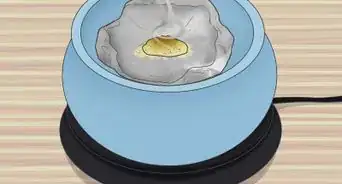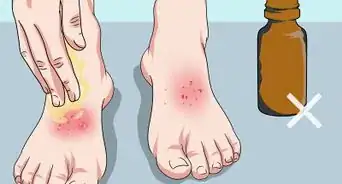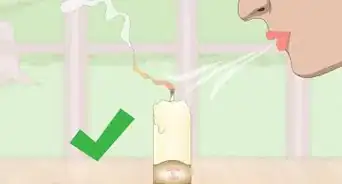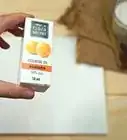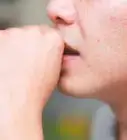wikiHow is a “wiki,” similar to Wikipedia, which means that many of our articles are co-written by multiple authors. To create this article, 23 people, some anonymous, worked to edit and improve it over time.
There are 12 references cited in this article, which can be found at the bottom of the page.
The wikiHow Video Team also followed the article's instructions and verified that they work.
This article has been viewed 171,783 times.
Learn more...
Fans of Victorian-era romance novels are sure to have read about fragile, swooning women calling for their smelling salts in the midst of great distress. Yet smelling salts aren’t a thing of that bygone era. Many of today's athletes, including hockey players, boxers and football players, use these ammonia-releasing salts to boost energy or to regain consciousness after being hit hard.[1] Yet making them can be hazardous and is best left to chemists in laboratories. So try these non-ammonia aromatic alternatives, which can also be blended to increase alertness and boost energy as well as to relieve anxiety and stress, to help with sleeplessness and to combat colds!
Steps
Making the Salt Base
-
1Prepare the Epsom salt. Epsom salt, which forms half of the base of aromatherapy smelling salts, is not an actual salt but instead a natural compound of Magnesium and Sulfate Heptahydrate. Using dry measuring cups, measure 1.25 cups of it, and pour it into a medium-sized, metal, hard plastic or glass bowl.[2] Take the rest and store it in an airtight container so you can make a variety of smelling salt blends later.
- You want to use a metal, hard plastic or glass bowl so that when you later add the oil, they won’t absorb into the bowl, which would happen to one degree or another in a wooden bowl.
- Epsom salt is cheap. You can buy a 2 pound box of Epsom salt for about $2 at pharmacies and at big-box stores.
- A 5 pound bag costs about $5, which would leave you plenty for a nice bath soak and a whiff of one of your smelling salt blends.
-
2Measure and add the sea salt. Created through a process of water evaporation, sea salt isn’t heavily refined like table salt, leaving it coarser. That’s one reason it, along with Epsom salt, work well as a base for smelling salts – they’re both able to absorb the essential oils that are added to them. You will want to measure 3/4 of a tablespoon of the sea salt and add it to the Epsom salt.
- There are two kinds of sea salt – fine-grind and flaked. Either will work, but because flaked sea salt has less moisture, it will better absorb the oil.[3]
Advertisement -
3Stir the salts together. Using a metal spoon, stir them until they are well blended. You should see the sparkle of the sea salt crystals throughout the mixture.[4] Alternatively, if you are using a glass bowl with a tight-fitting lid, put the lid on and shake really well until the salts are thoroughly mixed.
- Another option would be to use a fairly large and thoroughly washed plastic container with a lid, such as those used to hold sour cream, to put the salts in and then shake together.
- You want to use a metal spoon when mixing for the same reason as you want to use a metal, hard plastic or glass bowl. Later, when you add the essential oils, they won’t soak into a metal spoon.
Creating an Essential Oil Blend
-
1Decide the effect you want from the smelling salts. Do you want to be more alert and invigorated? Do you want to de-stress? Do you have trouble sleeping? Once you decide, do an online search such as “energizing essential oils” to create a list of essential oils with this effect or characteristic.[5]
- Other examples of words to include in your search are calming, soothing, uplifting, clarifying, purifying and so forth.
- You can also do searches such as “essential oils for headaches” or “essential oils for depression.”
-
2Select three essential oils by category type. When you first learn to blend essential oils, it’s best to stick to just a small number as things can go from fresh to foul fast. To make sure they will compliment each other, you must determine the category under which each of your listed essential oils falls. You can figure this out by doing an online search for "essential oil categories" or something similar. For each of the oils your search revealed and that you now have listed, write its category name beside it.
- The nine categories are: floral, woodsy, earthy, herbaceous, minty, medicinal/camphorous, spicy, oriental and citrus.[6]
- As a rule of thumb, oils from the same category generally blend well together.
- Additionally, florals blend well with spicy, citrusy and woodsy oils. Woodsy blends well with all categories. Spicy and oriental oils blend well with floral, oriental, and citrus. Minty oils blend with citrus, woodsy, herbaceous and earthy oils.[7]
-
3Determine the notes of your essential oils. Essential oils are further divided by notes – top, middle and base notes – to create what is called a synergistic blend. Top notes evaporate the fastest and are sharp and refreshing; middle notes are warm and help equalize a blend; and base notes are heavier and help hold the blends essence longer.[8] Taking your list of essential oils, next write down the note of each oil beside its name.
- You can also find them listed by note type online. Or you can check out a book from your local library that will list both categories and types.
-
4Choose your essential oils. Through the process of elimination, take your list and select one oil from each note, ensuring that all oils you choose are from categories that blend well together. Finding the aroma that appeals most to you will require experimentation. Blending essential oils is certainly more art than science. Here are some blends created specifically for this article that meet the criteria for notes and categorization.
- Energizing/mental alertness blend: peppermint (Mentha piperita) as the top note, rosemary (Rosmarinus officinalis) as the middle note and Peru balsam (Myroxylon pereirae) as the bottom note.
- Relaxing/anti-stress blend: lavender (Lavender angustifolia) as the top note, ylang ylang (Cananga odorata var genuine) as the middle note and vetiver (Vetiveria zizanioides) as the base note.
- Soothing/sleeplessness blend: bergamot (Citrus bergamia) as the top note, roman chamomile (Anthemis nobilis) as the middle note and sandalwood (Santalum album) as the base note.
- Combat colds/clear sinuses blend: First, therapeutic blends do not need to follow, and typically don’t, the rules of keys and categories of aromatic blends. There are a variety of therapeutic blends, which you can search for online. Here is one, also created for this article: eucalyptus (Eucalyptus globulus), which acts as an expectorant and to relieve congestion[9] ; ravensara (Ravensara aromatica), which acts as an antibacterial, antimicrobial and anti-allergenic agent[10] ; and bay laurel (Laurus nobilis), which acts as an antioxidant and antiseptic.[11]
-
5Determine the oil blend ratio. Start with a blend of 10, 20 or 25 total drops of oil as essential oils can not only be quite expensive but you also will be experimenting at first. You will want to use the following ratio for aromatic blends: 30-50-20, in which 30% of your blend will be from your top note oil, 50% from your middle note oil and 20% from your base note oil.[12]
- Later you will add 6 drops of oil to the mixed salts, so to make the energizing blend above according to this ratio, you only need to make a blend using at least 10 drops. For 10 drops according to the 30-50-20 ratio, you would add 3 drops of peppermint, 5 drops of rosemary and 2 drops of Peru balsam.[13]
-
6Create your essential oil blend. Open each bottle of oil and, using a dropper, put the correct number of drops from each essential oil bottle into a new, unused amber bottle with a tightly sealing lid. Screw the lid on tight and shake well.
- Amber bottles protect the constituents of essential oils from damage caused by light because they filter out UV rays.[14] [15]
- You can buy them expensively in bulk or individually in a variety of sizes online or at shops like The Container Store.
- You should also store your blends in a cool, but not cold, place out of the sunlight. Essential oils are volatile, meaning they will react to extreme temperatures by evaporating.[16]
-
7Label the bottle. On a small strip of paper, write down the essential oils you used. Place it on the side of the bottle and place a piece of scotch tape over it. You also might even come up with a name for your blend and add that, too.
Mixing and Packaging the Blended Oil and Salt Base
-
1Add the oil to the salts. Using a dropper, add 6 drops of your blended oil to the salt mixture. If the amber bottle that your essential oil blend is in has a plastic orifice reducer on the top, you can either remove it and use a dropper to collect the oil or you can gently turn the bottle on its side and tap it so only one drop comes out at a time. Next take a metal spoon and stir the oil and salts together extremely well.
- If you have a lid for the bowl or are using a plastic container with a lid, put the lid on and shake vigorously after you have stirred the oil and salts together well.
- If you don’t have either of these, you might try pouring it all in a large zip lock bag after you’ve stirred in the oil. Seal it tightly and shake it well, turning it several times in the process, before pouring it all back into the bowl.
- Remember: If you find that the scent isn’t strong enough, you can always add more. Just do so judiciously and slowly. Undiluted essential oils are strong, and using them is one of those times in which less truly is more. So add 1-2 drops, remix and set it aside for awhile. When you come back, it might be aromatic perfection.
-
2Pour the smelling salts into a bottle. Again you will want to use an amber bottle to protect the essential oils in the smelling salts, though it will need to be larger than those you use for the oils. Using a funnel, pour the salts from the bowl into the bottle. Seal the lid tightly.
- If you have a little left over, that’s fine. If there’s enough, you could put it in a smaller amber bottle for travel or to give to a friend or family member.
-
3Label the smelling salts. You want to make sure you know exactly which blend you used with each batch of smelling salts you make. As you did with your blended essential oil, write down the oils used on a small piece of paper and secure it to the bottle with scotch tape.
- You could also give it a name and put it on the bottle.
- You could even find a photo, illustration or quote online that represented the essence of that batch of smelling salts, print it and adhere it to the bottle.
Using Your Smelling Salts
-
1Take a whiff from the bottle. Open the bottle of smelling salts, hold it up to your nose and inhale for a few seconds. Then replace the lid. It’s as simple as that!
- You could also divide the batch you made and put it into smaller amber bottles. One could be for home use, and you could toss the other in your purse or put it in your pocket for times when you’re away from home.
-
2Place the smelling salts in a bowl. Many people love to have bowls of potpourri in their homes but become frustrated because the scent fades so quickly. Essential oil-infused smelling salts will last much longer. Pour the smelling salts in a small bowl, and place them around your house. You might use them to simply make a room smell nicely, or you might place them strategically to help offset unpleasant odors.
-
3Create a sachet. Add the smelling salts to a small drawstring bag, or sew a small, square-shaped pouch from fairly porous material and fill it with the smelling salts. If you made a blend to help you sleep, you might place it on your pillow. You could put an uplifting blend in your lingerie drawer. Or you could hang one blended for relaxation from the rearview mirror in your car.
Warnings
- While essential oils are natural solutions, they are still highly concentrated chemical compounds. Some have contraindications, which you can find online by doing a search like “essential oil contraindications” or “clary sage contraindications,” for instance.⧼thumbs_response⧽
- Never apply essential oils directly to your skin. They must first be diluted, and you should perform a skin patch test to check for an allergic reaction.⧼thumbs_response⧽
- Wash your hands well after handling essential oils and before touching your eyes.⧼thumbs_response⧽
- Pregnant and nursing women should use caution when using essential oils. There are a number of essential oils that are not recommended during these times.⧼thumbs_response⧽
- It’s not recommended to use essential oils on children under 3 months old, and keep children away from them. Many smell yummy and can be toxic if ingested in large quantities.⧼thumbs_response⧽
- Keep essential oils away from fire and flames. They are flammable.⧼thumbs_response⧽
- Never ingest essential oils.⧼thumbs_response⧽
References
- ↑ http://www.ncbi.nlm.nih.gov/pmc/articles/PMC2579444/
- ↑ https://m.youtube.com/watch?v=jmdYlk3iVnQ
- ↑ https://www.foodrepublic.com/2013/10/01/5-types-of-salt-every-cook-needs-to-know/
- ↑ https://m.youtube.com/watch?v=jmdYlk3iVnQ
- ↑ http://www.growingupherbal.com/blending-essential-oils-for-beginners/
- ↑ http://www.growingupherbal.com/blending-essential-oils-for-beginners/
- ↑ http://www.rootedblessings.com/how-to-make-your-own-essential-oil-blends-that-work/
- ↑ http://www.your-aromatherapy-guide.com/blending-essential-oils.html
- ↑ http://www.aromaweb.com/essential-oils/eucalyptus-oil.asp
- ↑ https://www.organicfacts.net/health-benefits/essential-oils/health-benefits-of-ravensara-essential-oil.html
- ↑ http://www.nutrition-and-you.com/bay-leaf.html
- ↑ http://www.aromaweb.com/articles/aromaticblending.asp
- ↑ http://www.growingupherbal.com/blending-essential-oils-for-beginners/
- ↑ https://m.youtube.com/watch?v=jmdYlk3iVnQ
- ↑ https://books.google.com/books?id=pc00AgAAQBAJ&pg=PT6&lpg=PT6&ots=1NfpbAF9lO&focus=viewport&dq=where+can+you+buy+amber+bottles+for+oils&output=html_text
- ↑ https://books.google.com/books?id=pc00AgAAQBAJ&pg=PT6&lpg=PT6&ots=1NfpbAF9lO&focus=viewport&dq=where+can+you+buy+amber+bottles+for+oils&output=html_text
- ↑ http://www.crunchybetty.com/21-things-you-should-know-about-essential-oils
